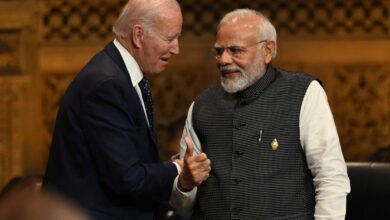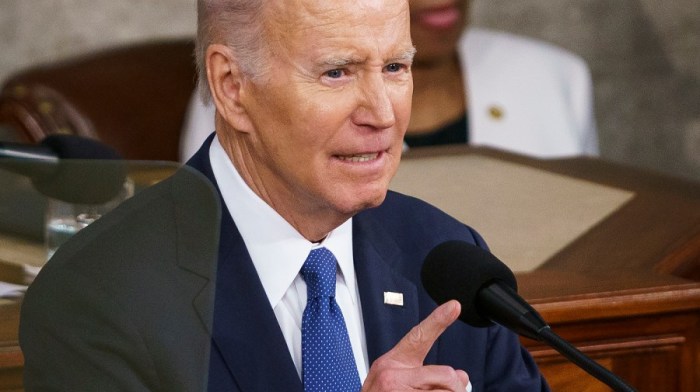
Annotated State of the Union: A Deeper Dive
Annotated State of the Union: A Deeper Dive – Imagine the President delivering the annual State of the Union address, but this time, it’s not just a speech. It’s a living document, a tapestry of words woven with insights, historical context, and expert analysis.
This is the world of annotated State of the Union addresses, where the words themselves become a springboard for understanding the nuances of policy, history, and the very fabric of American politics.
This blog delves into the fascinating evolution of annotated State of the Union addresses, exploring how annotations have transformed the way we consume and interpret this pivotal moment in American democracy. We’ll examine different annotation techniques, their impact on public discourse, and how technology is shaping the future of this unique form of analysis.
Historical Context
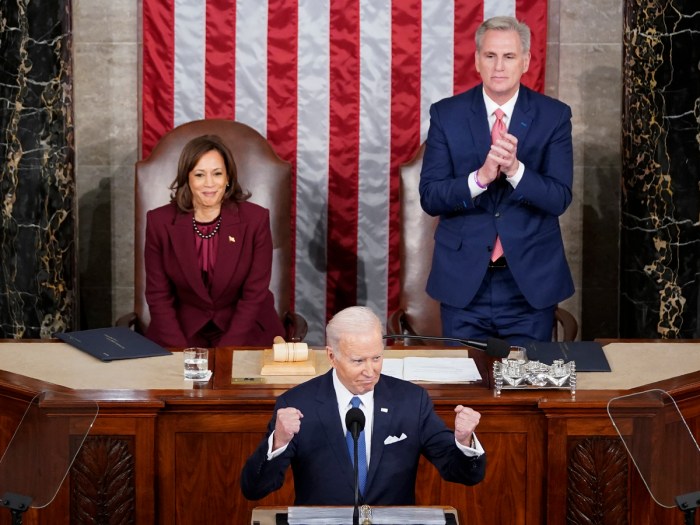
The State of the Union address, a tradition dating back to the early days of the United States, has evolved significantly over time. From its initial purpose of informing Congress about the state of the nation to its modern-day role as a platform for presidential agenda-setting and national discourse, the address has consistently adapted to changing political landscapes and technological advancements.
This evolution has been particularly evident in the emergence and increasing prominence of annotations, which have fundamentally transformed the way people consume and analyze the State of the Union address.
The Rise of Annotations
The use of annotations in the State of the Union address has its roots in the early 20th century. As the address gained more public attention and became a significant event in the political calendar, journalists and scholars began to analyze the content, identifying key themes, policy proposals, and rhetorical strategies employed by presidents.
These early analyses, often published in newspapers and academic journals, served as the precursors to modern-day annotations. The advent of the internet and digital technologies in the late 20th and early 21st centuries ushered in a new era of annotation.
Online platforms and social media allowed for real-time commentary and analysis of the State of the Union address, enabling a wider audience to participate in the discourse. This interactive approach to consuming the address, facilitated by annotations, has transformed the way people engage with the speech, moving beyond passive listening to active analysis and debate.
The annotated State of the Union is a fascinating document, offering a glimpse into the complexities of policy and political strategy. It’s particularly interesting to see how the president frames issues, and how those frames are received by the public.
For example, the president’s decision to seek authorization for military action in the Middle East is often analyzed in the context of the annotated State of the Union. My own perspective on this decision, which you can read about in my post why I opposed the resolution to authorize force , highlights the importance of critical analysis when evaluating such complex issues.
This kind of critical examination is essential for understanding the nuances of the annotated State of the Union, and for engaging in meaningful political discourse.
Notable Annotated Addresses
Several annotated State of the Union addresses have left a lasting impact on the public discourse. One such example is President Ronald Reagan’s 1982 address, known for its focus on economic recovery and the “Morning in America” theme. Annotations of this address highlighted Reagan’s use of optimistic rhetoric and his emphasis on individual responsibility, which resonated with a nation struggling with economic recession.
The annotated State of the Union, a document detailing the President’s vision for the nation, often touches upon crucial topics like climate change and its impact on our planet. Understanding the potential consequences of our actions, such as those outlined in this insightful article on effects on the environment , is vital when analyzing the President’s proposed policies and their implications for our future.
The annotated State of the Union provides a valuable platform to assess the President’s commitment to environmental sustainability and the strategies they plan to implement.
The annotations also drew attention to Reagan’s skillful use of storytelling and emotional appeals to connect with the audience.Another notable annotated address is President Barack Obama’s 2010 address, which focused on the aftermath of the Great Recession and the need for economic recovery.
Annotations of this address emphasized Obama’s call for bipartisanship and his focus on long-term economic growth. The annotations also highlighted Obama’s use of data and statistics to support his arguments, demonstrating the increasing reliance on evidence-based policymaking.
Impact of Annotations
Annotations have had a profound impact on the consumption and analysis of the State of the Union address. They have provided context, clarity, and depth to the speech, enabling a more nuanced understanding of the president’s message. Annotations have also fostered greater engagement with the address, encouraging dialogue and debate among a wider audience.
The annotated State of the Union is a great way to get a deeper understanding of the president’s message, but sometimes it feels like I’m reading a textbook. I crave a more dynamic, engaging approach to news. That’s why I find the CNN of the Arab world so fascinating.
It offers a fresh perspective on global events, which is something I appreciate when analyzing political speeches like the State of the Union.
The interactive nature of annotations has democratized the analysis of the State of the Union address, allowing individuals from diverse backgrounds and perspectives to contribute their insights.The evolution of annotations in the State of the Union address reflects the changing nature of political discourse and the growing influence of digital technologies.
As technology continues to evolve, we can expect annotations to play an even more prominent role in shaping the way people consume and analyze the State of the Union address, fostering greater engagement and understanding of this important political event.
Types of Annotations: Annotated State Of The Union
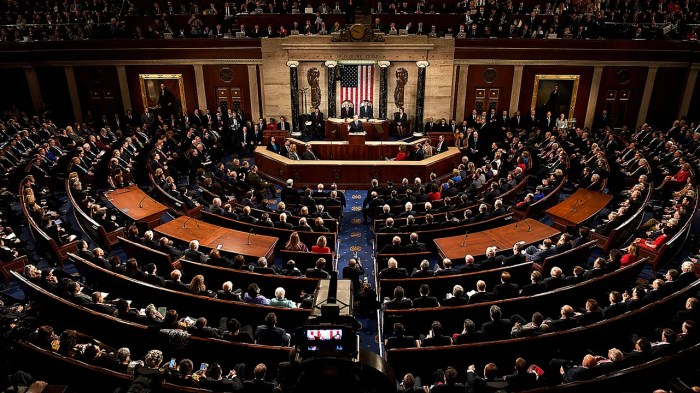
Annotations play a crucial role in enhancing the understanding and analysis of State of the Union addresses. They provide context, highlight key points, and reveal the underlying messages and strategies. Different types of annotations serve distinct purposes, offering diverse perspectives on the speech.
Types of Annotations
Various annotation techniques are employed to enrich the understanding of State of the Union addresses. These annotations provide context, highlight key points, and reveal the underlying messages and strategies.
- Factual Annotations:These annotations provide factual information related to the topics discussed in the speech. They may include statistics, historical data, policy details, or relevant events. For example, a factual annotation might highlight the economic growth rate mentioned by the president or the budget allocation for a specific program.
- Policy Annotations:These annotations focus on the policies and proposals mentioned in the speech. They may explain the details of the policy, its intended impact, and potential challenges. For instance, an annotation might clarify the specifics of a proposed tax reform or the rationale behind a new infrastructure initiative.
- Rhetorical Annotations:These annotations analyze the rhetorical devices used by the president. They may identify persuasive techniques, such as metaphors, analogies, or appeals to emotions. For example, an annotation might highlight the use of a specific anecdote to evoke empathy or the repetition of a key phrase to emphasize a particular point.
- Historical Annotations:These annotations provide historical context for the speech. They may connect the president’s statements to past events, policies, or speeches. For instance, an annotation might draw parallels between a current proposal and a similar initiative from a previous administration.
- Political Annotations:These annotations focus on the political context of the speech. They may analyze the president’s strategic goals, the target audience, and the potential impact on political discourse. For example, an annotation might examine the president’s attempt to appeal to a specific demographic or the potential consequences of a particular policy for the upcoming elections.
Effectiveness of Annotation Techniques
The effectiveness of different annotation techniques depends on the specific purpose and audience. Factual annotations are crucial for providing objective information and verifying claims. Policy annotations help understand the details and implications of proposed policies. Rhetorical annotations shed light on the persuasive strategies employed by the president.
Historical annotations offer a broader perspective by connecting the speech to past events and trends. Political annotations provide insights into the strategic goals and political implications of the speech.
Table of Annotation Types, Annotated state of the union
| Annotation Type | Purpose | Example from Recent State of the Union Addresses |
|---|---|---|
| Factual Annotations | Provide objective information and verify claims. | “The unemployment rate has fallen to 3.5%, the lowest in over 50 years.” |
| Policy Annotations | Explain the details and implications of proposed policies. | “The American Jobs Plan will invest \$2 trillion in infrastructure, creating millions of new jobs and boosting the economy.” |
| Rhetorical Annotations | Analyze the persuasive strategies employed by the president. | “We must stand together, as one nation, to overcome the challenges we face.” |
| Historical Annotations | Connect the speech to past events and trends. | “The challenges we face today are reminiscent of the Great Depression, but we have the tools and the resolve to overcome them.” |
| Political Annotations | Analyze the strategic goals and political implications of the speech. | “This speech is a clear signal that the president is focused on winning the next election.” |
Impact of Annotations
Annotations have a profound impact on how audiences understand and interpret the State of the Union address. By providing context, clarifying points, and highlighting key messages, annotations can significantly enhance the viewer’s comprehension and engagement with the speech.
Influence on Public Discourse
Annotations can significantly influence public discourse and political debate surrounding the State of the Union address. They can:
- Provide a framework for analysis:Annotations offer a structured approach to analyzing the speech, helping viewers identify key themes, arguments, and policy proposals. This allows for more informed and nuanced discussions about the address.
- Promote critical thinking:Annotations encourage viewers to critically examine the speech’s claims, evidence, and rhetoric. By highlighting potential biases, inconsistencies, or omissions, annotations can stimulate deeper analysis and questioning.
- Facilitate cross-partisan dialogue:Annotations can help bridge the gap between different political perspectives by providing a common ground for understanding the speech’s content and its implications. They can offer a platform for diverse viewpoints to be considered and debated.
Shaping Public Perception
Annotations can play a crucial role in shaping public perception of the State of the Union address. By providing context, highlighting key messages, and offering different perspectives, annotations can:
- Influence audience interpretations:Annotations can influence how viewers interpret the speech’s content, emphasizing certain points and downplaying others. This can affect public understanding of the address and its potential impact.
- Enhance the speech’s credibility:Annotations can enhance the speech’s credibility by providing supporting evidence, historical context, and expert analysis. This can increase viewers’ trust in the information presented and their overall acceptance of the speech’s message.
- Shape public opinion:Annotations can contribute to the formation of public opinion by providing viewers with information and perspectives that they might not have otherwise considered. This can influence their views on the issues discussed in the speech and their support for the policies proposed.
Impact on Policy Decisions
Annotations can indirectly influence policy decisions by shaping public opinion and informing political discourse. By providing a comprehensive and nuanced understanding of the State of the Union address, annotations can:
- Inform policy debates:Annotations can provide lawmakers and policymakers with valuable insights into the public’s perception of the speech and its potential impact on policy decisions. This can inform their own positions on the issues discussed.
- Mobilize public support:Annotations can mobilize public support for specific policies by highlighting their benefits and addressing potential concerns. This can create pressure on lawmakers to prioritize certain issues and policies.
- Shape legislative agendas:Annotations can influence the legislative agenda by highlighting key issues and priorities discussed in the State of the Union address. This can lead to increased attention and action on certain policy areas.
The Future of Annotated State of the Union
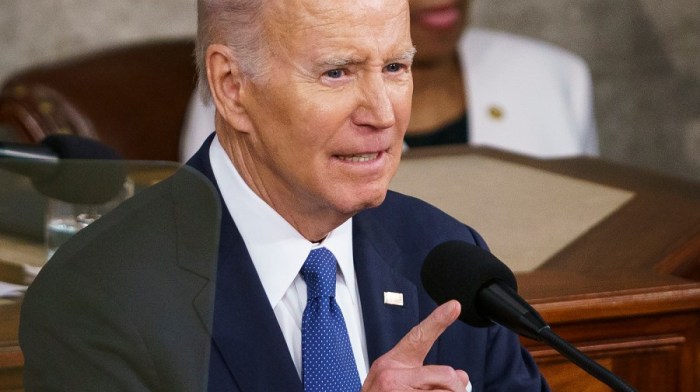
The State of the Union address, a cornerstone of American democracy, has evolved significantly over the years. From its initial format as a written report to its modern televised spectacle, the address has adapted to changing communication technologies. Now, with the advent of artificial intelligence and advanced data analysis, the future of the State of the Union address promises to be even more interactive and insightful, thanks to the power of annotations.
The Role of Technology in Annotation
Technology will play a pivotal role in shaping the future of annotations in State of the Union addresses. The advancements in natural language processing (NLP) and machine learning (ML) will enable more sophisticated and accurate annotations.
- Automated Annotation:NLP algorithms will be able to automatically identify key themes, policy proposals, and historical references within the address, generating annotations in real-time. This will free up human analysts to focus on more nuanced interpretations and analysis.
- Real-time Feedback:With the help of ML algorithms, annotations can be dynamically updated based on audience reactions, social media trends, and news coverage. This will provide a more comprehensive and dynamic understanding of the address’s impact.
- Personalized Annotations:Using user profiles and preferences, future annotations can be tailored to individual users, highlighting aspects of the address that are most relevant to them. This personalized approach will enhance the engagement and understanding of the address for diverse audiences.




